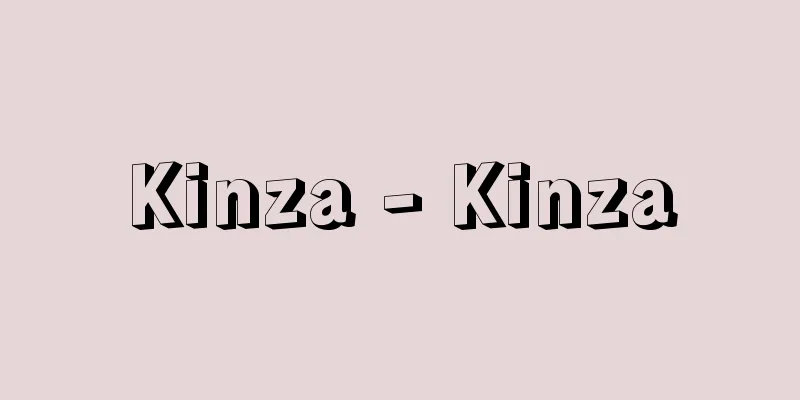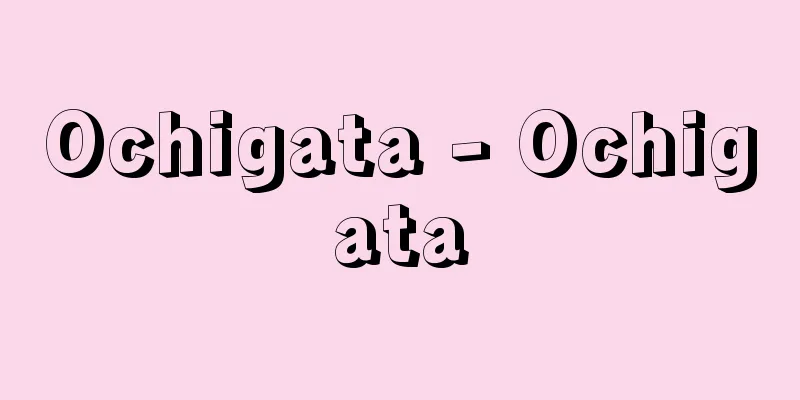Kinza - Kinza

|
A gold coin mint under the direct control of the Edo Shogunate. In 1595 (Bunroku 4), Tokugawa Ieyasu invited the engraver Goto Shozaburo Mitsutsugu from Kyoto to Kanto to mint Musashi koban (1 ryo coins) in Sunpu and Edo. Ieyasu then established gold mints in Kyoto and Sado in 1600 (Keicho 5), and had them mint Keicho koban and ichibu gold coins the following year. Keicho oban (10 ryo coins) were minted at the oban mint from 1601 by Goto Tokujo (Shozaburo's teacher) and his family. The organization of the gold mint consisted of the Okane Aratameyaku (financial inspector), the gold mint, and the Fukidokoro (blowing station). The Okane Aratameyaku (financial inspector) was the gold mint's head (tounin) (chief), and was responsible for appraising newly minted gold coins and stamping their marks. The position was hereditary within the Goto family. The gold mint was made up of a certain number of zain (councillors), including toshiyaku (seniors), fureyaku (financial inspectors), kanjoyaku (financial accountants), and heiyaku (commissioners' office), and was under the control of the Bugyo (financial magistrate). The Fukidokoro was a foundry where koban shi (financial coin makers) used their apprentices to blow koban coins under the supervision of the zain. The name Kinza is said to have originated when a mint near Reiganji Temple in Hongo, Edo, was moved to the official residence of Kinza Goto in Honcho 1-chome (current location of the Bank of Japan's head office) during the Genroku period (1688-1704) during which time coinage was restructured, and people began to call it Kinza. Illegal practices at Kinza were discovered twice, in 1810 (Bunka 7) and 1845 (Koka 2), and the Goto family was forced to close. Kinza burned down in 1866 (Keio 2), and was abolished in 1869 (Meiji 2) with the establishment of the Mint Bureau. [Yotaro Sakudo] [Reference item] | coins |Source: Shogakukan Encyclopedia Nipponica About Encyclopedia Nipponica Information | Legend |
|
江戸幕府直轄の金貨の鋳造所。徳川家康は1595年(文禄4)、京都から彫金家の後藤庄三郎光次(しょうざぶろうみつつぐ)を関東に招いて、駿府(すんぷ)および江戸で武蔵小判(むさしこばん)(一両判)を鋳造させた。ついで家康は1600年(慶長5)には京都、佐渡にも金座を設け、翌年から慶長小判・一分金をつくらせた。慶長大判(十両判)は1601年から後藤徳乗(とくじょう)(庄三郎の師)およびその一族により大判座で鋳造された。 金座の組織は御金改役(おかねあらためやく)、金座、吹所(ふきどころ)からなり、御金改役は金座の頭人(とうにん)(長官)で、新鋳金貨の鑑定ならびに極印(ごくいん)の打ち込みを行い、後藤家の世襲であった。金座は年寄役、触役(ふれやく)、勘定役(かんじょうやく)、平役など一定数の座人で構成され、勘定奉行(ぶぎょう)の支配下に置かれていた。また吹所は鋳造工場で、座人監督の下に小判師が徒弟を使って小判を吹き立てた。金座という名のおこりは、元禄(げんろく)期(1688~1704)の貨幣改鋳に際して、江戸の本郷霊岸寺(れいがんじ)の近くにあった鋳造所が本町一丁目(現在の日本銀行本店所在地)にあった金座後藤の役宅に移されたとき、世人がこれをよんで金座といったことに始まると伝えられる。金座では1810年(文化7)と1845年(弘化2)の2回にわたって不正が露見したので、後藤家は取り潰(つぶ)しとなった。金座は1866年(慶応2)焼失し、69年(明治2)には造幣局の設置に伴って廃止された。 [作道洋太郎] [参照項目] | |出典 小学館 日本大百科全書(ニッポニカ)日本大百科全書(ニッポニカ)について 情報 | 凡例 |
>>: Mycorrhizal plant - Kinkonshokubutsu (English spelling) mycorrhizal plant
Recommend
Hydrodictyon reticulatum; water net
A species of green algae in the family Polypodium,...
False cavity - Giku
In arterial dissection and aortic dissection, a bl...
Merano (English spelling)
Meran in German. A city in the foothills of the Al...
Owl parrot
…There are about 60 species distributed from Indi...
Limestone - limestone
A type of sedimentary rock whose main component i...
mémoire (English spelling)
…Notes, also called announcements, are the most i...
Sachsen-Wittenberg
Herzogtum was a duchy in medieval Germany. After t...
Monti - Monti (English spelling) Vincenzo Monti
Italian poet. Born to a wealthy family in Alfonsi...
Salisbury Plain
A plain in central Wiltshire, southwest England, U...
Printing font - Insatsushotai
…When a logotype that represents a company name i...
English Quilting
...It is used for a wide range of purposes, from ...
Phalaris minor
…[Tetsuo Koyama]. … *Some of the terminology that...
Genius - sugar beet
A genius is someone who demonstrates abilities an...
Kamyshin (English spelling)
A city in the Volgograd Oblast in southwestern Rus...
majuscule
… Greek calligraphy had a style for stone inscrip...









